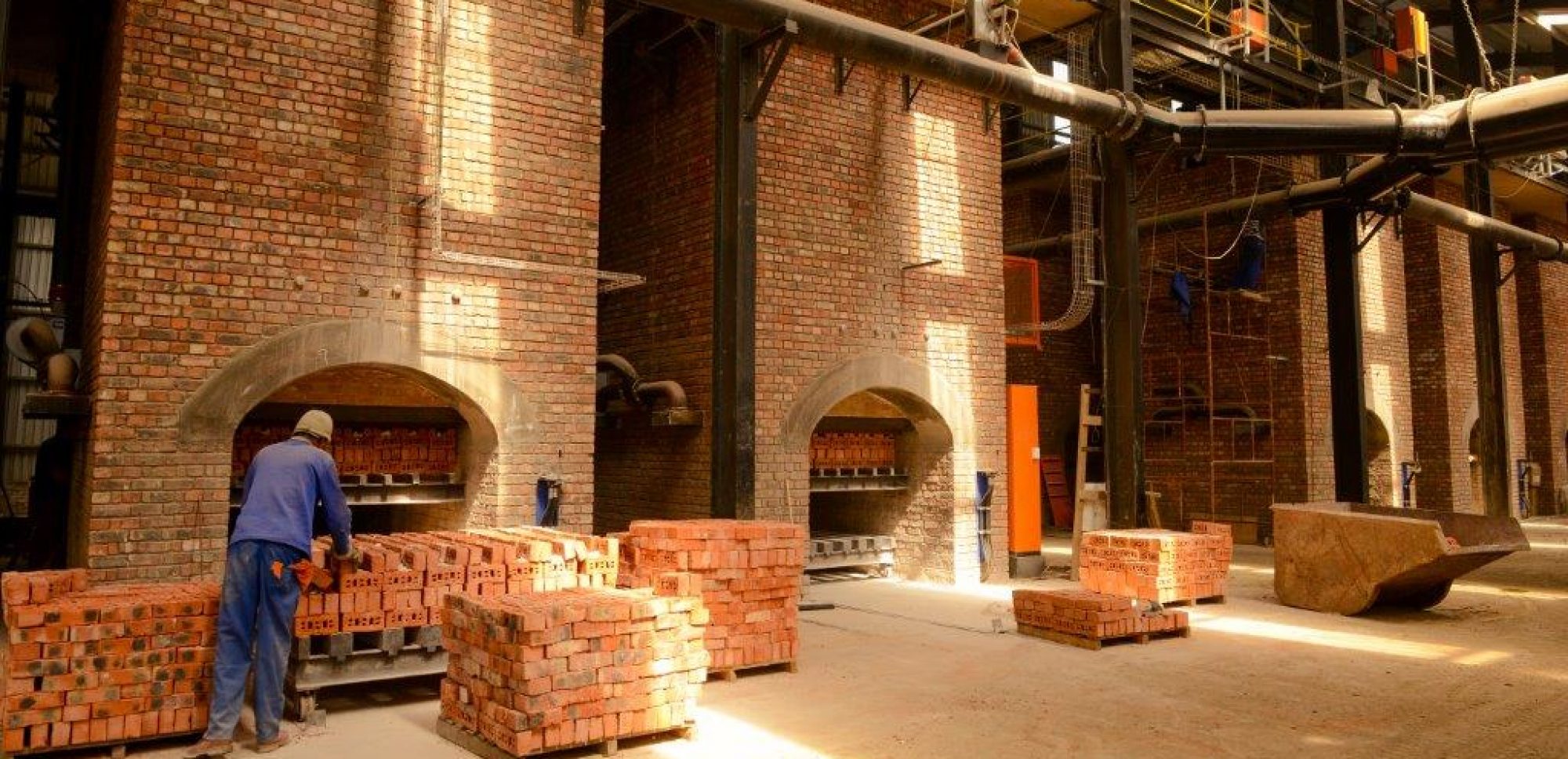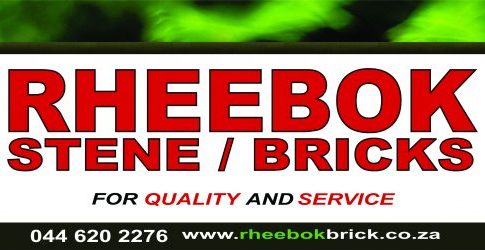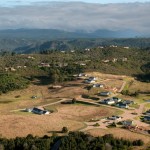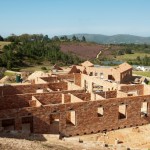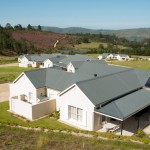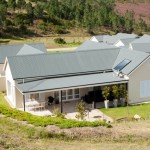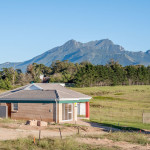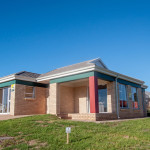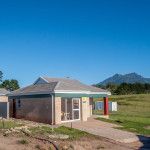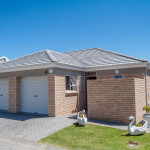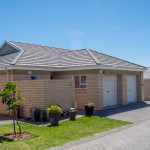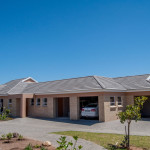Methods of Manufacturing
Clay bricks are formed in a mould (the soft mud method), or more frequently in commercial mass production by extruding clay through a die and then wire-cutting them to the desired size (the stiff mud process). The shaped clay is then dried and fired either by burning in a kiln or sometimes, in warm and sunny countries, by sun-drying to achieve the final, desired strength. The action of heat gives rise to a sintering process that causes the clay particles to fuse and thus develops extremely strong ceramic bonds in the burnt clay bodies. Such bonds are highly stable. As a result, bricks can withstand the severe weathering actions and are inert to almost all normal chemical attacks.
Basic Advantages of Brick
- Aesthetic Appeal
- Thermal & Acoustic Insulation
- Zero Maintenance Cost
- Fire Resistance
- Flexible in Application
1. Aesthetic Appeal
Brick possesses natural and infinite pleasant colors of burnt clays. Its color formation is achieved through a complicated physio-chemical reaction during the firing process. In contrast to the color of stained body, brick color is permanent and will not fade during weathering process. Different clay compositions, firing temperatures, or kiln atmosphere can lead to different colors. By proper control of these factors, bricks can be made to exhibit endless variety of natural and attractive colors. Bricks’ natural colors combined with the extreme flexibility in applications produce aesthetic results which are always personal and everlasting.
2. Thermal & Acoustic Insulation
Thermal Insulation: Brick generally exhibits better thermal insulation property than other building materials like concrete. Perforation can improve the thermal insulation property of bricks to some extent. Besides, the Thermal Mass and moisture that the brick has absorbed can help to keep the temperature inside the house relatively constant. In orther words, brick absorbs and releases heat slowly and thus keep the house cool during day-time and warm during night-time.
Acoustic Insulation: As far as acoustic insulation is concerned, brick wall provides good sound insulation property due to its dense structure. The thickness and density of brick will deaden noise transmission and will deflect noise from streets, neighboring homes, and jet planes. The sound insulation of brick work is generally accepted as 45 decibels for a 4 1/2 inches thickness and 50 decibels for a 9 inches for the frequency ranges from 200 to 2,000 Hz. Know more about Noise Control.
3. Zero Maintenance Cost
Clay bricks do not require maintenance. When you build a home, you might save a few hundred dollars by using a substitute wall material. However, major exterior maintenance such as painting can cost as much as several thousand dolars, depending on your home size. Clay brick may cost a little bit more cost initially, but the very first time that you paint, you might well spend more than the additional cost of the brick.
In addition, you do not need to worry the clay brick from rotting, denting, warping, rusting, spliting, peeling, fading, and termites. As your home gets older, it naturally becomes more beautiful.
4. Fire Resistance
The fire resistance of a building material refers to the length of time a walling element is about to resist a fully developed fire. In every case, clay brick walls obtain maximum fire ratings. To the owner of a clay brick building, this means peace of mind and substantial savings over time on insurance premiums. Please refer to the table below for Design of Clay Brickwork for Fire.
|
DESIGN OF CLAY BRICKWORK FOR FIRE
|
Fire resistance
period, minutes |
Required material thickness
for insulation Mm |
Maximum slenderness for
structural adequacy |
| 30 |
60 |
25.0 |
| 60 |
90 |
22.5 |
| 90 |
110 |
21.0 |
| 120 |
130 |
20.0 |
| 180 |
160 |
18.0 |
| 240 |
180 |
17.0 |
One incident, The Great Fire of London, dated back to 1666 has influenced/transformed the building code since the mediaval period by replacing the wooden houses with brick and stone buildings.
5. Flexible in Application
The high compressive strength of fired clay bricks has been exploited for millennia to build structures ranging from single-storey huts to massive public buildings and enormous bridges and viaducts. In particular, it can be used for loadbearing structures which greatly simplify the construction process so as to save materials, time, and labor. Besides, brick can be made into convenient shape and size to facilitate the construction work
Durability and Maintenance
Brick is a low maintenance, permanent, durable building material that won’t rot, rust, burn, corrode, decay, or encourage mold growth. Because it never needs painting, it does not require the use of paint containing volatile organic compounds (VOCs). The National Association of Home Builders’ (NAHB’s) National Green Building Standard (NGBS) gives credit for “building materials or assemblies that do not require additional site-applied material for finishing.”
The durability of masonry products such as clay brick is recognized by ASTM International and CSA International standards and should be part of building envelope designs. Brick units are not only durable but they also contribute to building assemblies that remain useful in the material cycle for long periods of time. If properly detailed, the use of clay brick will minimize the risk and environmental costs of premature failure of building components. As most deterioration occurs to the exterior of a building, good building envelope design is essential.
Besides material durability, the actual assemblage of the wall system is fundamental in ensuring the building’s longevity. Exterior brick walls are designed with a drainage component, or drainage cavity, that is designed to direct moisture that permeates through building materials or leaks via deficiencies in windows and other penetrations, back to the exterior.
Because of the durability of masonry and masonry structures, brick buildings are often ideal candidates for building reuse, allowing brick units to be repurposed or reused when carefully dismantled. Brick masonry also compares favorably with Life Cycle Analysis that includes materials, construction and energy consumption.
Resource Management
Brick manufacturing is one of the most efficient uses of raw materials to produce an end product. Brick’s primary ingredient, clay, has been classified as an “abundant resource” by American Institute of Architects (AIA), and typically a clay quarry can stay in use for at least 50 years. A 200 acre quarry is able to provide sufficient brick to clad approximately 10,000 houses (12.9 million square feet of wall area annually), in contrast to approximately 12,000 acres of farmland needed to produce enough straw bales to cover the same wall area. From one perspective, the industry optimizes benefits from the land for current and future generations by mining minerals that would be locked in if developed immediately, preventing future access to that clay. Through the extraction of the clay and rehabilitation of the land to pre-quarry use, future development can occur on land that achieved twice as much value as originally planned.
Brick manufacturing facilities are usually located near their source of raw materials. Any waste unfired brick is fed back into the manufacturing process to produce new brick and many facilities utilize scrap fired brick as grog, which replaces a portion of the virgin raw materials and further reduces emissions. Some facilities utilize off-site waste such as ceramic tile or scraps as part of the raw material for brick.
When waste fired brick is not used as grog, it can be recycled or repurposed into a variety of products such as kitty litter; landscaping materials for tennis courts, baseball fields or flower beds; masonry training; old, reclaimed brick for the construction of new buildings; fertilizer and backfill or aggregates, resulting in virtually no waste.
Recent advances in brick manufacturing have allowed the introduction of bricks with increased voids that provide equivalent performance with respect to resisting water penetration and flexural bond strength. The brick industry’s goal is to reduce resources used in the manufacturing process. Water used in the manufacturing process contains no added chemicals and is evaporated back into the air during the firing process, but further optimization of water use is always being studied.
Energy Efficiency and Reduced Emissions
A long service life reduces energy needs. Clay brick’s durability and 100-plus year life cycle reduces the need for replacement, thereby eliminating further manufacturing energy required for replacement products. Brick manufacturers strive to conserve energy in the firing process, using less than 50% of the energy required to produce brick in 2004 compared to 1981. Further fuel reduction efforts since 2004 have totaled approximately 10%.
Fuel savings since 2004 have also resulted in a reduction of approximately 145,075 tons of carbon dioxide. Air emissions are minimized with controls such as scrubbers installed on kiln exhausts. Dust is controlled on-site through a variety of filtering systems, vacuums and water mists.
Social Impact
Since clay occurs naturally, it is inherently inert even when formed into brick. Consequently, clay brick is the only cladding material that emits no volatile organic compounds (VOCs), which results in better occupant health, comfort and productivity. Brick also has a high sound proofing quality, providing a sound transmission class (STC) of 45 or greater, thereby shielding occupants from distracting outside noise, and because of brick’s inherent strength and fire resistance it often remains standing even under the harshest conditions. Brick’s passive-solar qualities and thermal mass properties take advantage of the sun’s energy for heating and cooling, keeping rooms cool in the summer and warm in the winter.
The use of clay brick in construction has a diverse and extensive history for a wide range of reasons. In addition to its durability and structure, it assists energy performance, waste management, and the environment. Furthermore, the progress in recent years in these key areas will ensure that the future of brick will be just as extensive.
